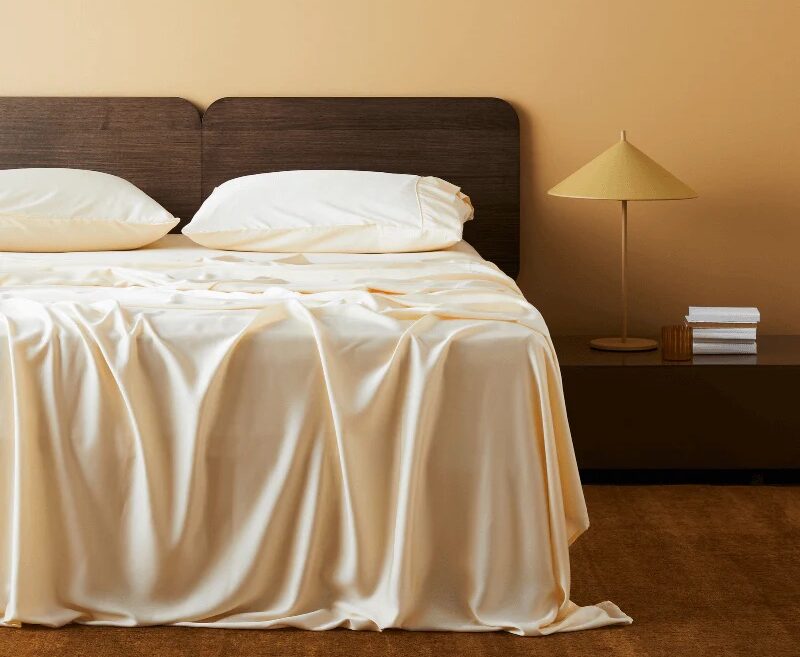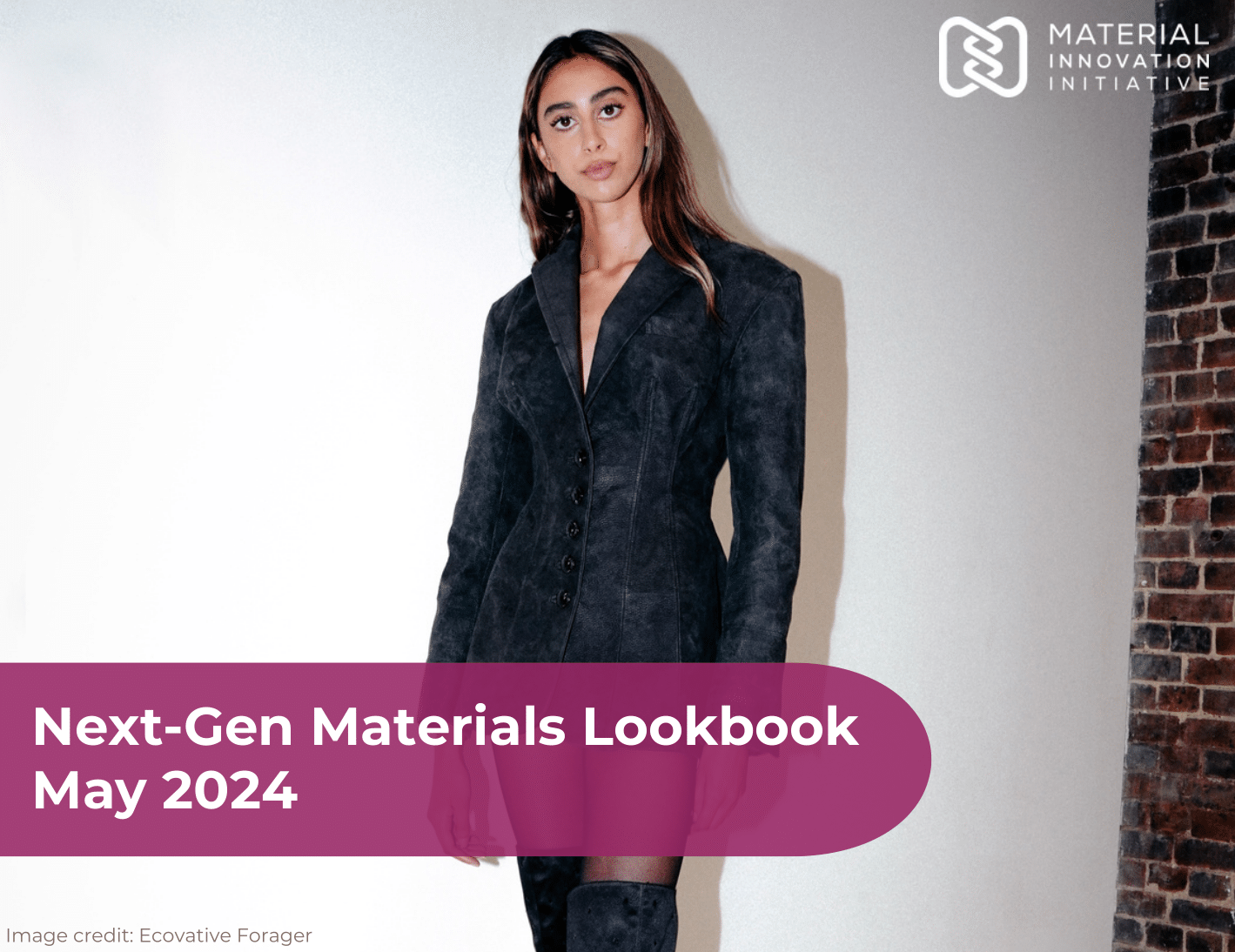
Image credit: Johannes Warnke x Lenzing
Our recent report titled “White Space #1: Sub-categories with limited innovation” covers the four currently under-served material categories of next-gen wool, silk, fur and down. Here, we look at the highlights from the next-gen silk section of the report: its market potential, what makes it special, how traditional silk can be improved upon, and the key targets material innovators should aim for. Stay tuned for our upcoming posts in this series covering next-gen wool, fur, and down.

Download the full report for free to learn about white spaces, or see our summary. Wondering what we mean by white spaces in the context of next-gen materials? See this blog post.
Market Potential
Polyester was originally designed as a replacement for silk during a time when it was in short supply. The technologies used to create next-gen silk are similar to those used for next-gen polyester. Thus, entrepreneurs, investors, and innovators looking to recreate silk should also look to the polyester market, and vice versa, as part of the total addressable market.
The total addressable market size for next-gen silk is significant, with the global silk market being valued at around USD 20 billion in 2024 and projected to be worth USD 44.6 billion by 2034.
The polyester market has also seen considerable growth in recent years. Its market size was estimated at USD 118.5 billion in 2023 with projections of it reaching USD 160 billion in 2032.
Uniqueness: What makes silk so special?
For in-depth information on next-gen silk, please see our What Makes Silk, Silk? Reports: Original and Revisited, and our related webinar.

Image credit: Patrick McDowell and Lenzing
Silk is a unique material with desirable attributes. Silk is peerless among other textiles due to its smooth, continuous filament. This lends silk yarn its celebrated properties of strength, elasticity and resistance to pilling. The high luster or “shine” of silk is also a standout feature. It absorbs natural and nontoxic dyes easily, imparting vivid colors. Silk is versatile: its protein-based composition makes it adaptable to different environments and it is thus an all-weather fabric. It is also diverse, silk textiles come in a variety of weights, hands, sheens, drapes, and sounds.
Innovation Potential: How can silk be improved?

Image credit: Circ
Silk has many positive attributes, but also several drawbacks. Many woven silks are delicate, requiring dry cleaning, hand washing, and steaming, to avoid shrinkage from machine washing. Furthermore, they have low long-term heat resistance, meaning that ironing can degrade them, and poor UV resistance. They can bleed and stain easily. Despite its high strength, the fine nature of silk filaments and their use in thin fabrics can make them susceptible to damage like snags. As a natural fiber, there can be fiber inconsistencies, or “slubs”. Silk fabrics also attract static, which can be uncomfortable. Lastly, and most notoriously, silk has a relatively high cost compared with cotton or synthetics and is therefore often reserved for luxury apparel and accessories.
Key targets for creating silk alternatives
With advancements in material and fiber science, we can create affordable, high performing, and more sustainable fibers that mimic the positive properties of silk and improve upon its negative attributes. Below are the attributes of silkworm silk by fiber and fabric.

Image credit: ettitude
The benefits of silkworm silk fiber and fabric
There are many desirable properties of silkworm silk fiber, such as its continuous filament (mentioned above), its smooth and fine translucent fibers, its low density and strength, and its compatibility with existing knitting and weaving infrastructure, to name a few.
By combining different arrangements of filaments into types and sizes of yarns and weaving those yarns into varying patterns and densities, a variety of silk fabric types are possible with unique aesthetics and performance.
Silk fabric is made unique by factors such as its soft handfeel, its luster, its different weave capabilities and diverse weights, and its natural flame resistance, again to name a few. Download the full report for a comprehensive review of these and more factors.
Improvement potential targets for silk
Like all the incumbent textiles, traditional silk carries with it some high environmental, social, and animal costs. This provides the backdrop for material innovators to make vast improvements. Improvement targets for the fiber and fabric itself include: increasing UV resistance, decreasing the tendency for static build-up, decreasing tendency for shrinkage and improving overall launderability and stain resistance, and improving the fiber consistency, to name a few.
Download the full report: White Space #1: Sub-categories with limited innovation for in-depth coverage of next-gen silk and the other untapped materials in white space number one; you’ll also discover the material innovation companies that are currently working on next-gen silk and polyester.
Want to see some real-world examples of next-gen silk? Check out our monthly next-gen materials “lookbooks” to see the latest brand and material company partnerships.
Don’t forget to sign-up to our newsletter to be notified when the next report in our white space series is published.
